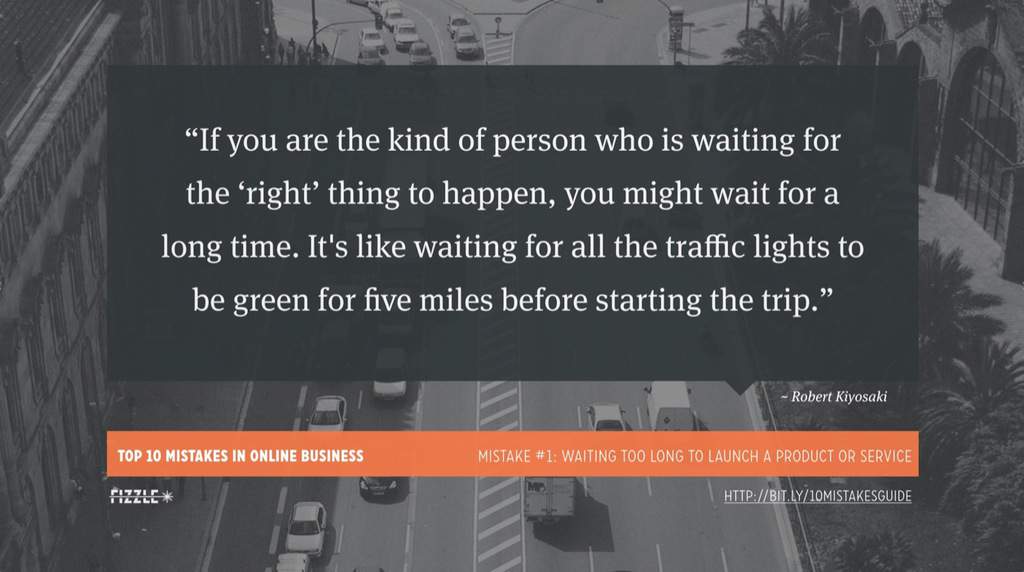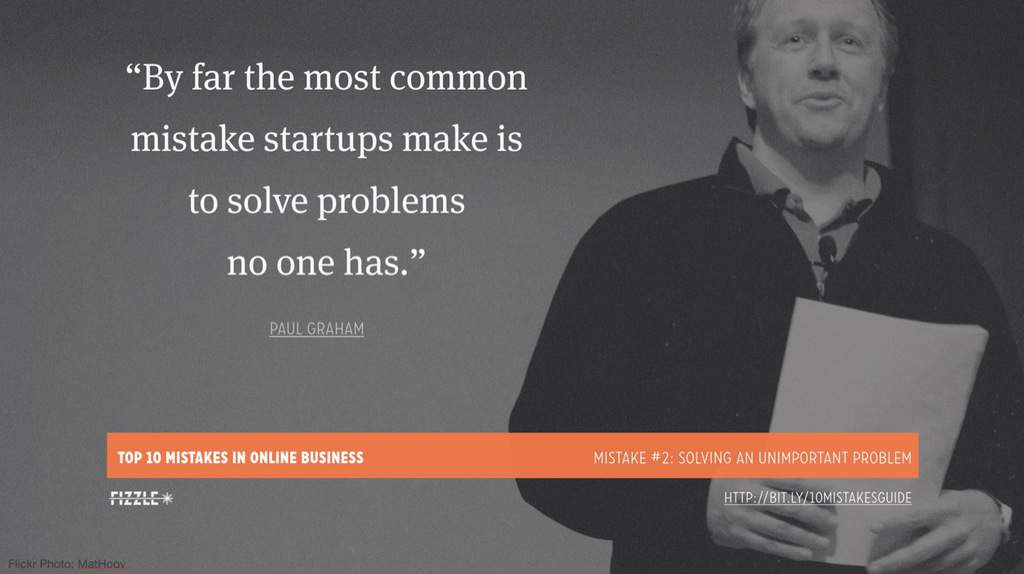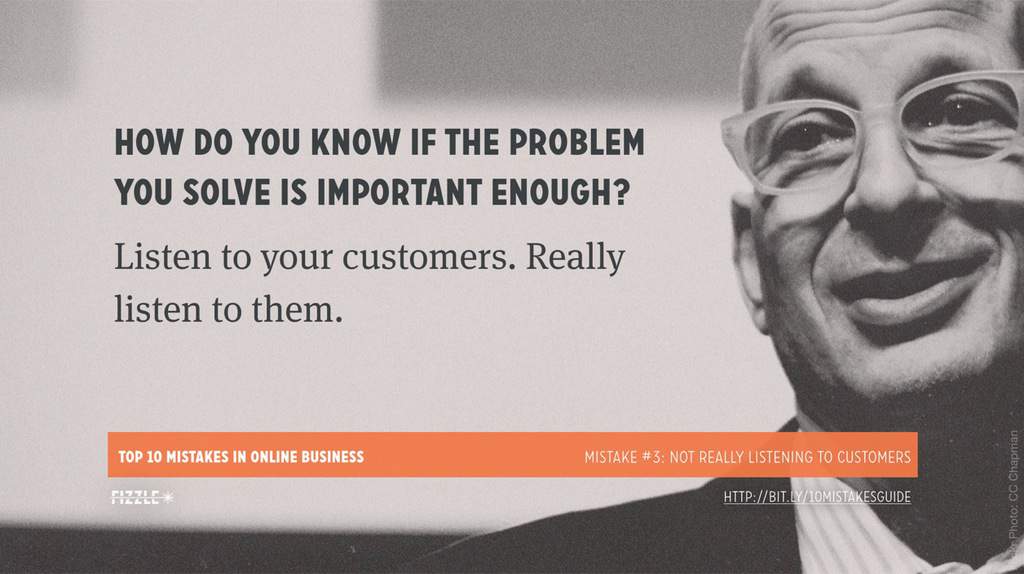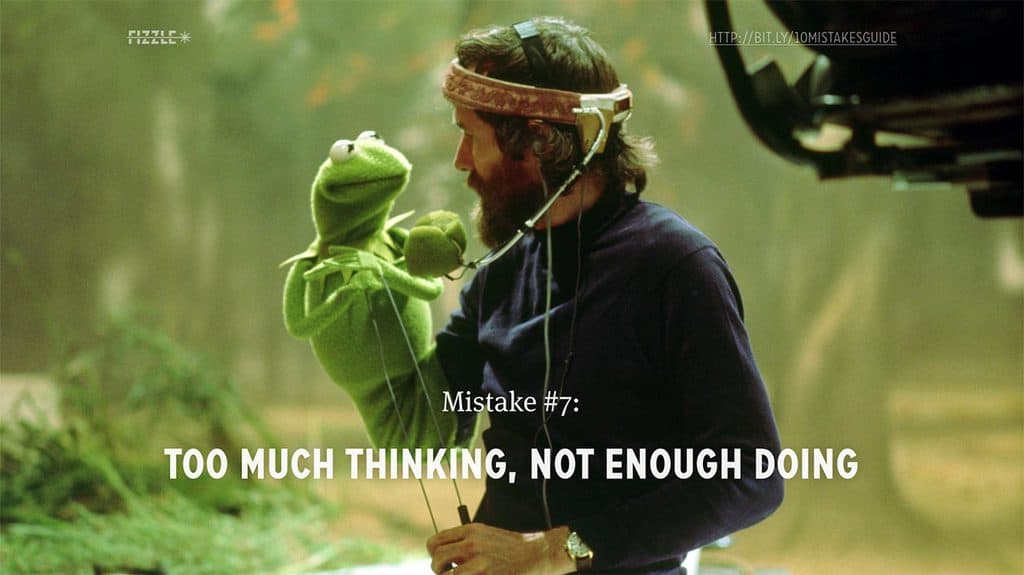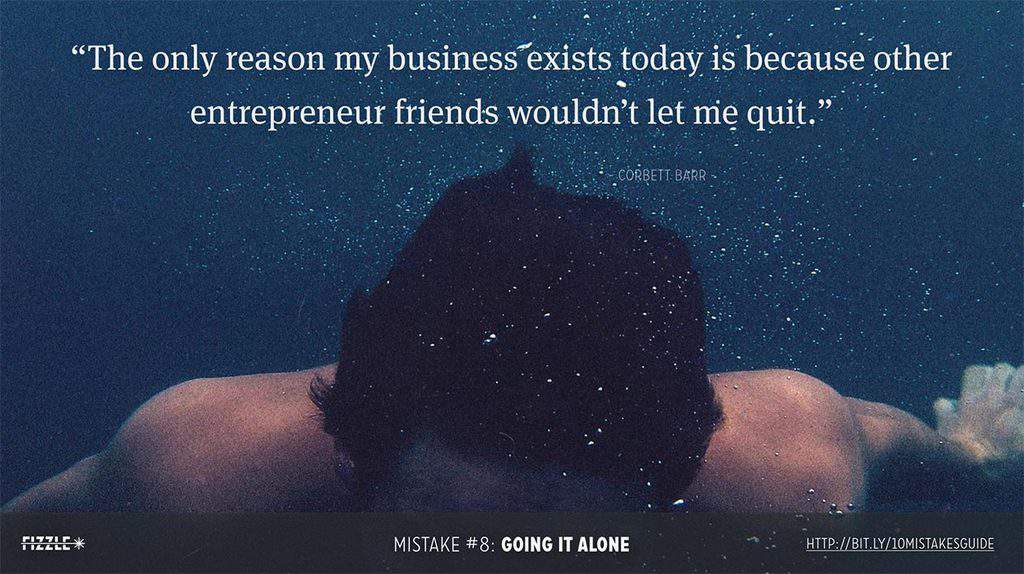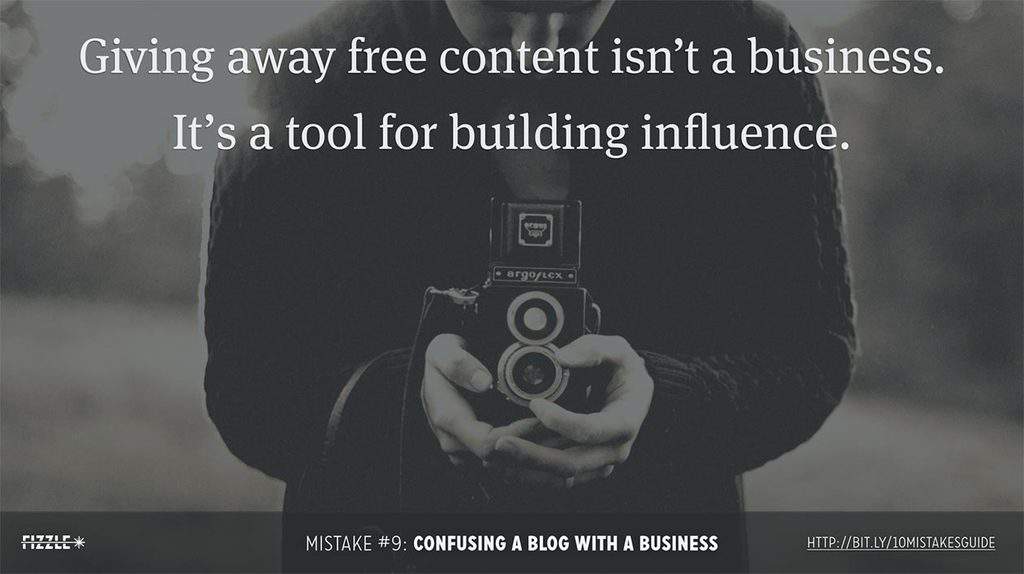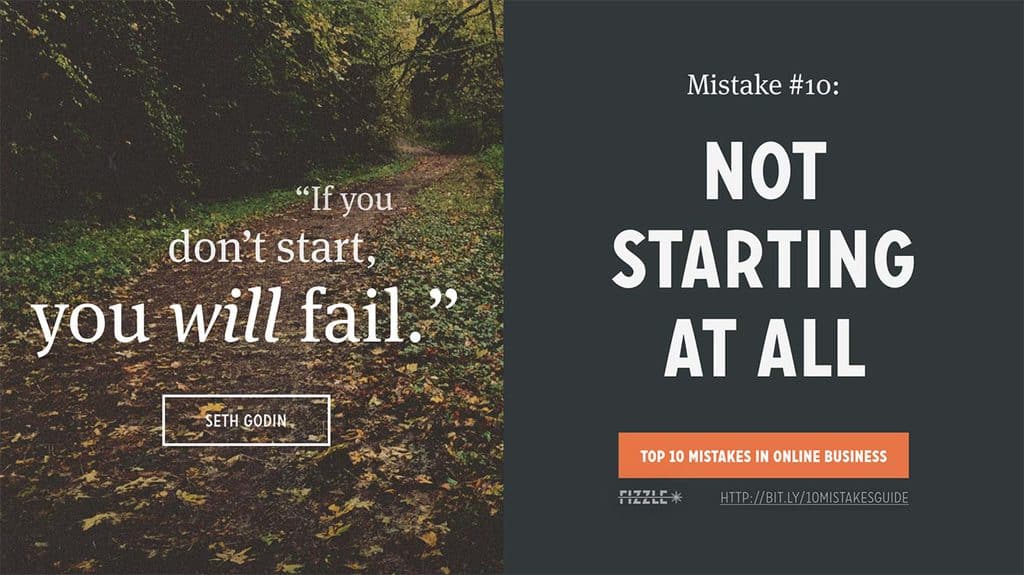1. Waiting too long to launch a product/service
When you start blogging or podcasting to build an audience, it’s easy to get stuck on the content “hamster wheel” for months or years without ever offering something for sale.
There are a few reasons this happens.
Some people are waiting for some magic audience size “1,000 subscribers” or maybe “10,000 visitors” or whatever your number might be.
Some people just can’t find the time to blog or podcast or make videos AND to build a product at the same time. It’s tough.
Some people simply talk themselves out of creating a product because they’re afraid no one will buy it. They don’t want to fail after putting in so much time creating content.
Whatever the reason, this is a fatal trap. If you’re building a business, you need to address the biggest risk head-on. The biggest risk you’ll face as a business is in creating something no one will pay for.
Plus, you need practice at building and launching products. Your first one might not be all that good. The sooner you put something out there, the closer you get to sustainable revenue.
2. Solving an unimportant problem
If the problem your business solves is important enough, you won’t even have to look for customers. Imagine if you had a cure for cancer, for example.
Businesses fail all the time because they try to solve a problem nobody really cares about. If you put your product or idea out there and nobody buys it, there’s a good chance you should look for a more important problem, not a bigger audience.
3. Not really listening to customers
How do you know if the problem you solve is important enough?
Listen to your customers. Really listen to them.
Don’t just listen to the customers who provide validation. Listen to the ones who ask for refunds or buy your product but don’t use it. Listen to the people who tell you they won’t buy, and find out why.
Don’t just pay lip service to your customers. You don’t have all the answers, they do. There’s a reason why “the customer is always right,” because without customers you don’t have a business.
4. Not being different enough
In most markets, customers have different options to choose from. If your business has competition, you have to give your potential customers a reason to choose your offering over another.
I see this all the time with new bloggers. They jump into a popular topic and essentially mimic or copy what other popular bloggers are already doing. I suppose they think “if it works for them, maybe it will work for me.”
But think about it from the reader or customer perspective. If they find your blog, they’ll be asking themselves “why is this blog worth spending any time on?” You have to answer that question quickly and clearly, before they click the back button.
You can’t expect to grow an audience by being an inferior version of some other better known site. Even if your site or product is arguably better than the competition, “better” is subjective.
Instead of simply trying to be better, you need to be different. Then, when someone asks why your site or product is worth her attention, your answer will be objective and easy to understand.
5. Choosing a topic you don’t care about
Whatever you choose to focus your business on, you’re going to need deep subject knowledge, fresh creativity, and unwavering stamina.
There will be competition who cares more about the topic than you do. How can you compete if the gap between your love of a topic and your competitors’ is wide?
This doesn’t mean your business has to be your #1 “passion” or life’s work (most of us don’t have one single passion in life), but don’t make things impossible by choosing something you don’t care about.
If you love your topic, stamina won’t be an issue. If you love your topic, creativity will flow, and influence will be easier to build.
Don’t ask yourself what the world needs. Ask yourself what makes you come alive and then go do that. Because what the world needs is people who have come alive. -Howard Thurman
6. Starting with vastly wrong expectations
This won’t be easy, and it won’t be quick.
Building a successful business is a massive undertaking. You probably can’t do it while traveling the world. If you have a full-time job, it will be much, much harder.
If your plan involves four-hour workweeks, or if your timeline is measured in weeks or months, you will probably fail.
These are the hard truths that people rarely talk about. Overnight successes don’t exist. Your original plan will probably have to be completely re-written, maybe multiple times.
Ask yourself: will building this business still be worth it if it takes years to get there? What if building the business is harder and more stressful than your current job?
Talk to some entrepreneurs who have achieved something close to what you want to achieve. Ask them what it really took. Ask them about stress and timelines and giving up. Ask them not to sugarcoat it. Really listen. Then ask yourself if you’re prepared for your own version of that.
7. Spending too much time thinking and not enough doing
Not much to say here that isn’t perfectly summed up in this quote:
Genius is one percent inspiration, ninety-nine percent perspiration.
-Thomas Edison
If your ratio of thinking-to-doing is anything less than 80% doing, think again do more.
As Chase likes to say, entrepreneurs have two modes, CEO mode and worker-bee mode. In a one-person business, you have to be both.
8. Going it alone
The only reason my business exists today is because other entrepreneur friends wouldn’t let me quit. Seriously, I tried to throw in the towel and start over with something else, but they wouldn’t let me. They talked me out of it.
No one can succeed in business alone. You need people to make it work. Your customers are people, your suppliers are people, your service providers are people.
Most importantly, you need support from other entrepreneurs who are at similar stages as you are, and from others with more experience.
The more connected you become with other entrepreneurs, the more normal your quest becomes. You’ll no longer feel crazy or alone, and you’ll realize that we all face obstacles just like you’re facing.
The entrepreneurs who talked me out of quitting were part of a little group that met weekly to hold each other accountable. It didn’t cost any of us a thing, other than an hour of our time each week, but it turned out to be the most valuable resource I ever used in my business.
Reach out to another entrepreneur or two, and ask them to meet weekly. Share your struggles and goals, and review your progress each week. This simple process is so powerful.
9. Confusing “blog” with “business”
Repeat after me: a blog isn’t a business. A blog isn’t a business.
A blog is an incredible platform for sharing your ideas, connecting with people and growing an audience. The same is true of podcasting, YouTubing, or any other place you might publish content for free.
Giving away free content isn’t a business. It’s a tool for building influence.Don’t count on turning that influence into sponsorships or advertising dollars. You’ll need a more direct plan for earning an income if you want your blog or podcast to pay off.
See point #1 above about launching a product/service.
Not starting at all
This is perhaps the biggest mistake of all. Don’t be that friend who talks and talks about starting a business for years and never does anything thing about it.
It’s easy to get so worried about all the possible mistakes that you never get started at all. But that’s the only way to guarantee failure.
Starting a business isn’t a sure thing — it takes guts and intelligence and heart and hustle — but you will get better over time ONLY if you start.
Starting a business isn’t a sure thing — it takes guts and intelligence and heart and hustle — but you will get better over time ONLY if you start.
The best way to ensure you’ll succeed is simply this: don’t be afraid to make mistakes. Mistakes are part of the process. So dive in, get started and find a community to support you… because you are not alone.
